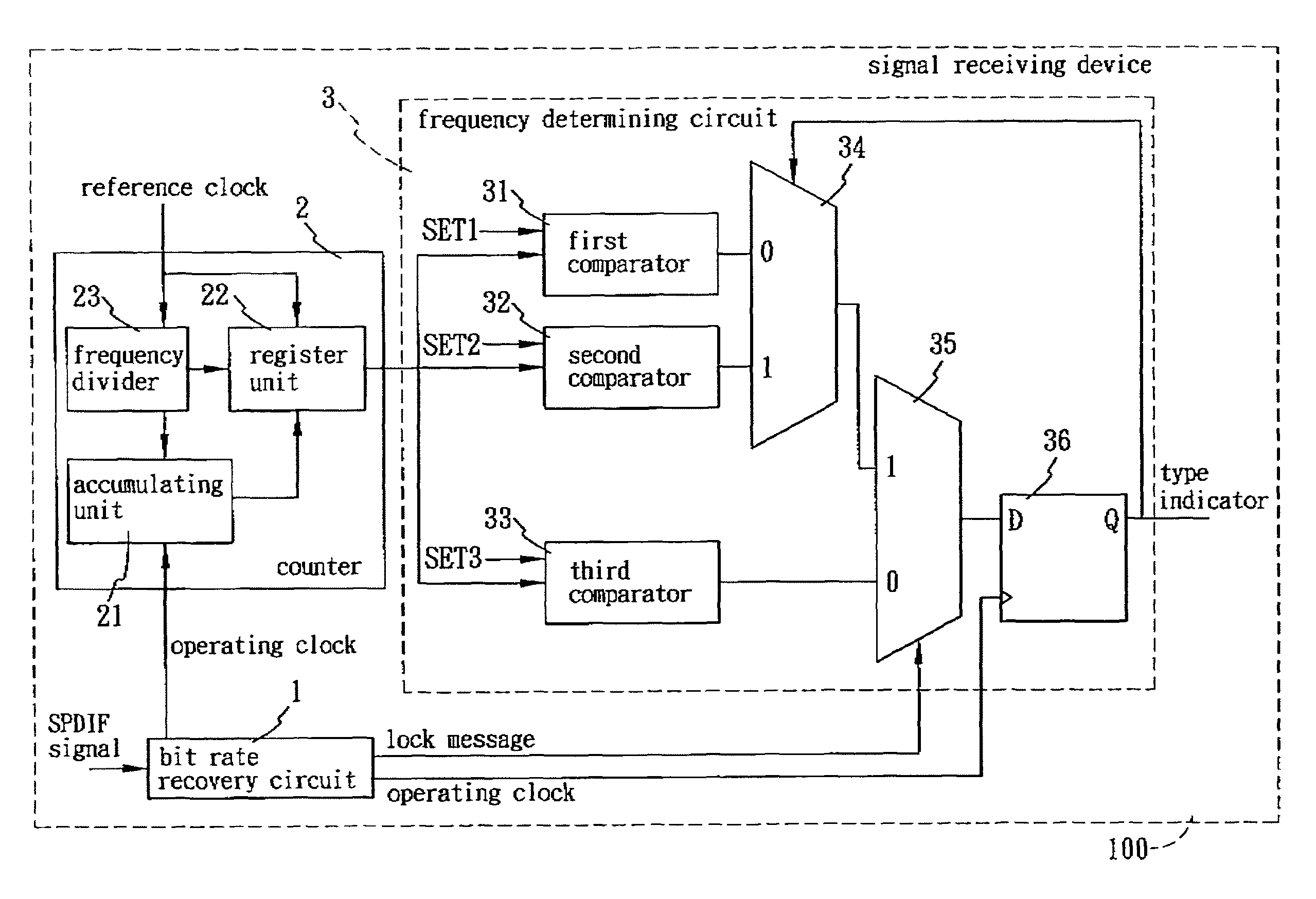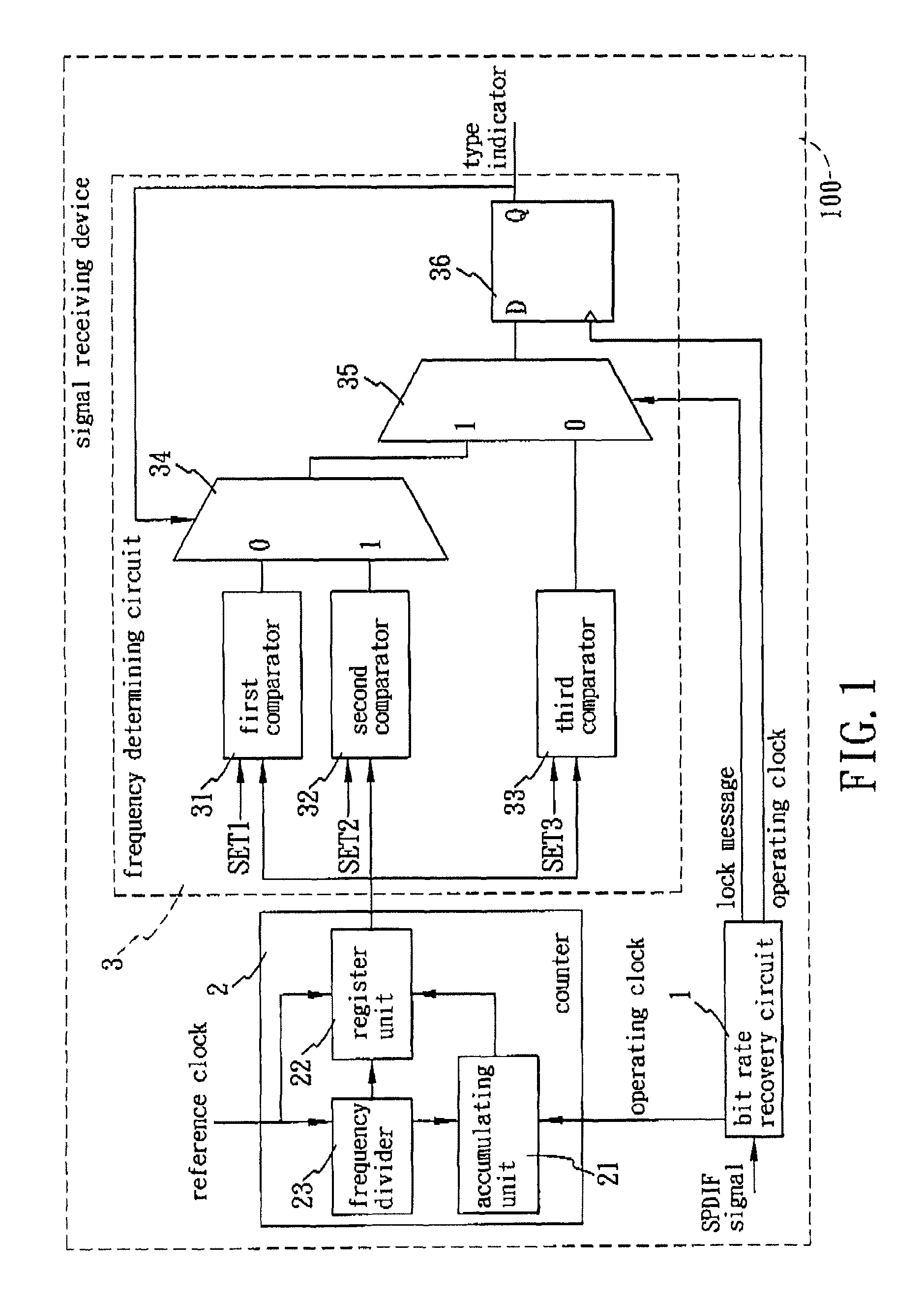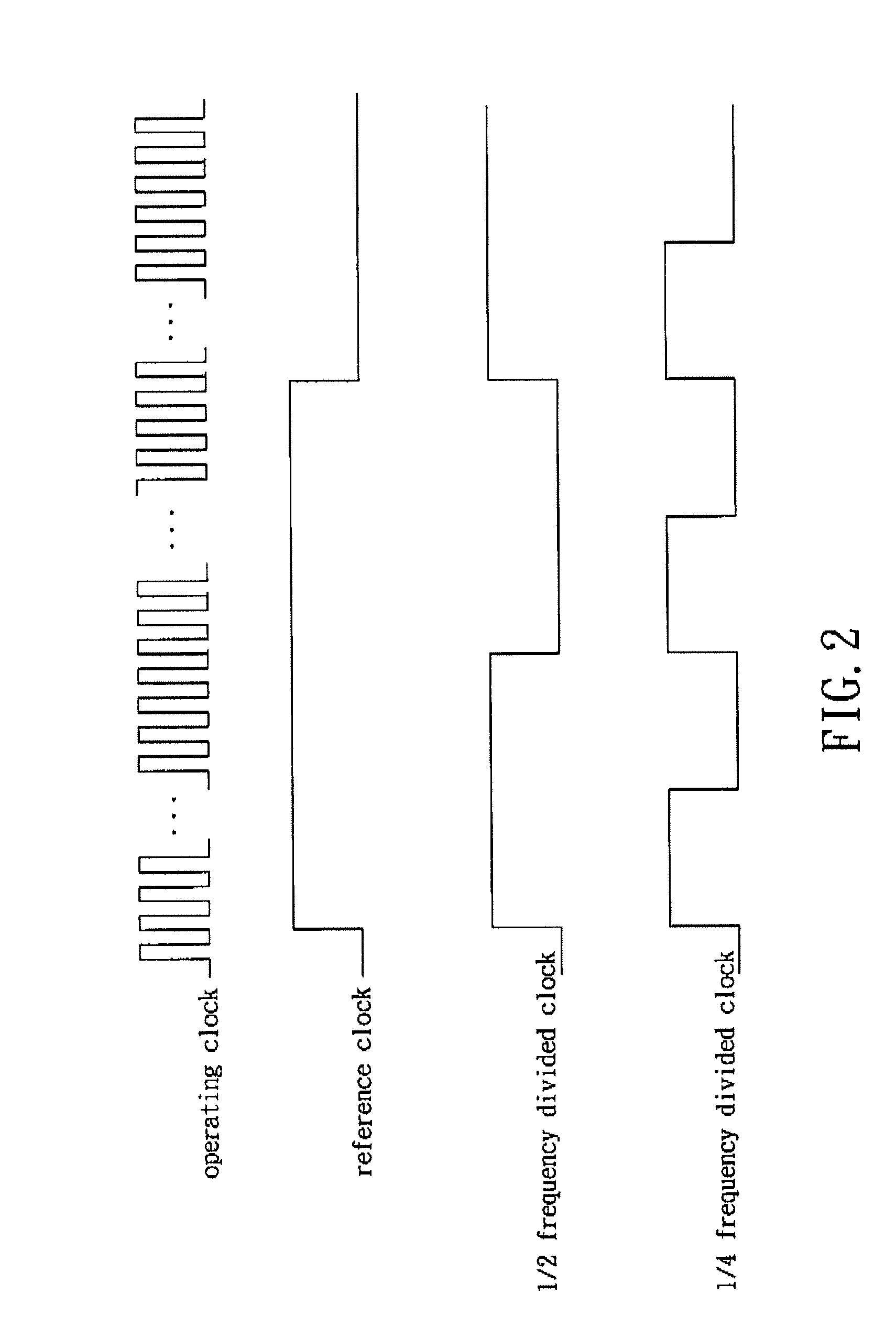Signal receiving device and frequency determining circuit
a signal receiving device and frequency determining circuit technology, applied in the field of frequency determining technique, can solve the problems of failure to achieve the lock state and neglected data received during the process of changing the frequency locking state, and achieve the effect of preventing data loss and better sustaining the frequency locked sta
- Summary
- Abstract
- Description
- Claims
- Application Information
AI Technical Summary
Benefits of technology
Problems solved by technology
Method used
Image
Examples
Embodiment Construction
[0016]FIG. 1 illustrates the preferred embodiment of a signal receiving device 100 according to the present invention. The signal receiving device 100 is adapted for receiving a multi-bit signal-under-test that supports one of first and second base frequency types, and outputting a type indicator indicating which one of the first and second base frequency types is supported by the signal-under-test. The type indicator is used for processing audio signals. In this embodiment, the signal-under-test is an SPDIF (Sony / Philips Digital Interconnect Format) signal. Accordingly, the first base frequency type supported by the signal-under-test is a 48K base frequency, and the second base frequency type supported by the signal-under-test is a 44.1K base frequency. When the type indicator has a value ‘1’, it indicates that the signal-under-test supports the first base frequency type, and when the type indicator has a value ‘0’, it indicates that the signal-under-test supports the second base f...
PUM
 Login to View More
Login to View More Abstract
Description
Claims
Application Information
 Login to View More
Login to View More - R&D
- Intellectual Property
- Life Sciences
- Materials
- Tech Scout
- Unparalleled Data Quality
- Higher Quality Content
- 60% Fewer Hallucinations
Browse by: Latest US Patents, China's latest patents, Technical Efficacy Thesaurus, Application Domain, Technology Topic, Popular Technical Reports.
© 2025 PatSnap. All rights reserved.Legal|Privacy policy|Modern Slavery Act Transparency Statement|Sitemap|About US| Contact US: help@patsnap.com



